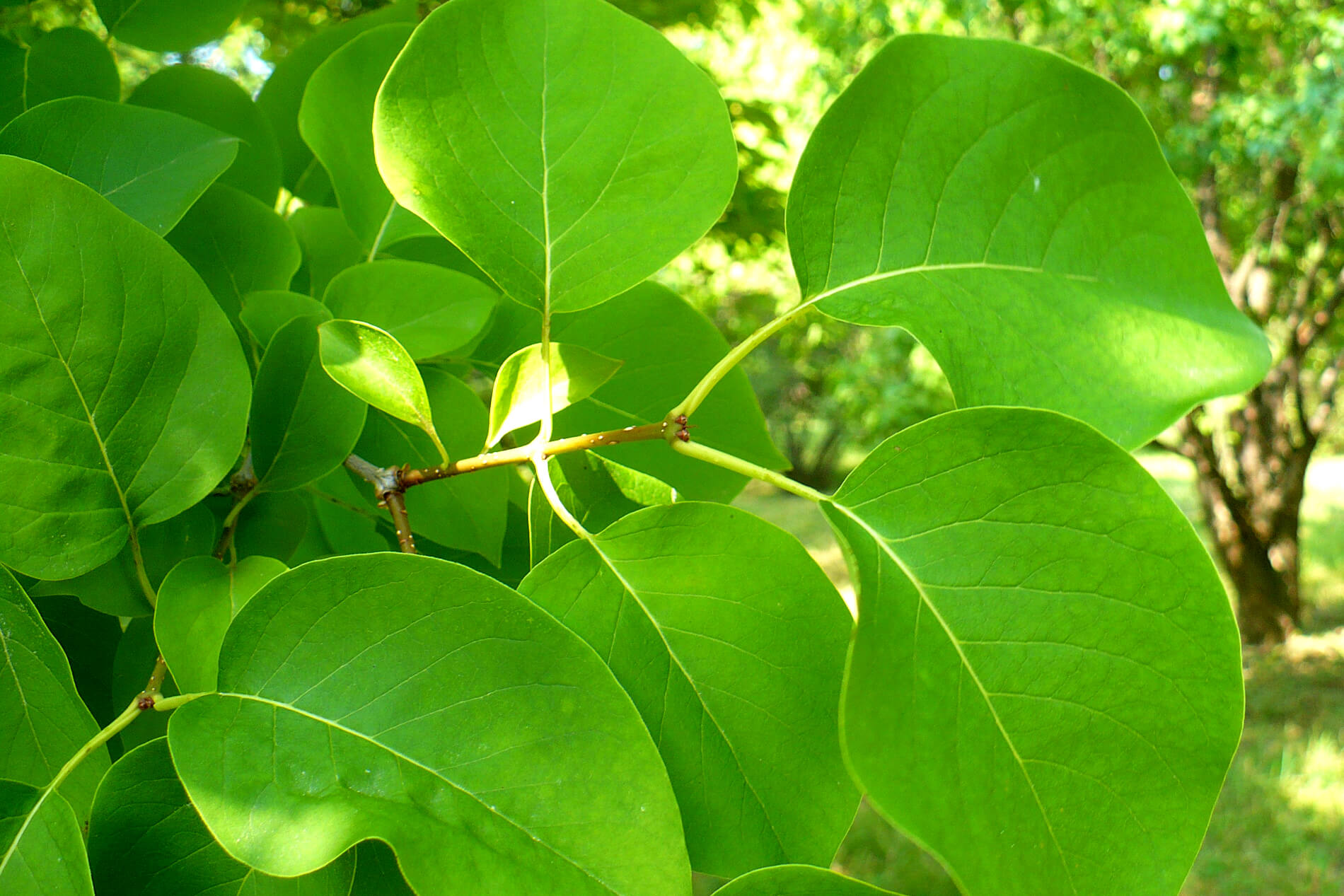Lilacs are beloved for their fragrant spring blooms, but you can recognize a lilac bush even when it’s not flowering by examining the leaves closely. Lilac leaves have some subtle yet distinguishing characteristics that set them apart from other plants. In this article, we’ll go over the key features to identify lilac foliage.
Leaf Arrangement
Lilac leaves grow opposite each other along the stem, with each leaf emerging directly across from another. They do not alternate along the branch or whorl around it This opposite leaf arrangement is a tell-tale sign of a lilac shrub.
Leaf Shape
Most lilac leaves are ovate or heart-shaped, Some may be more rounded while others are slightly narrower, But the basic form is broad at the base and tapers to a point at the tip This shape is a classic identifier of lilac leaves
Leaf Margins
Lilac leaf edges are entire, meaning they are smooth without teeth or lobes. The leaf outline forms an unbroken oval or heart shape. No jagged edges or indentations along the margin.
Leaf Size
Lilac leaves are typically 2 to 5 inches long. Leaf width ranges from 1 to 3 inches wide, smaller than the length. The leaves are a medium green color and moderately sized on the shrub.
Leaf Texture
Lilac leaves have a smooth, shiny surface and feel supple or slightly leathery. Undersides may have fine hairs but overall the foliage feels soft, not fuzzy or hairy. The texture is smooth and flexible.
Leaf Venation
Veins in lilac leaves are pinnate, meaning a main central vein runs from base to tip with secondary veins branching off it. The veins are not starkly visible but upon close inspection show a faint pattern.
Leaf Scent
When crushed, lilac leaves have no distinct aroma. This contrasts with their fragrant flowers in spring. Don’t expect any scent from the leaves.
Leaf Buds
Leaf buds on lilac twigs are much smaller and more sharply pointed than the larger, fatter flower buds. They protrude directly from the branch, not on a short side stalk like flower buds.
Leaf Coloration
New spring leaves emerge light green and darken as they mature. Fall color is a muted yellow before the leaves drop. Winter leaf buds are reddish brown. So you’ll see different shades through the seasons.
Identifying Characteristics Together
It can be tricky differentiating lilac leaves from some lookalikes, like ash trees. But with attention to detail, you can positively identify Syringa vulgaris foliage. Examine the leaf characteristics together rather than relying on just one trait.
The key qualities to recognize are the opposite arrangement, heart or oval shape, smooth margins, moderate size and texture, pinnate veins, lack of aroma, pointed buds on twigs, and color changes through the seasons. Look for these signs in combination to conclusively identify a lilac leaf.
Appreciating Lilac Leaves
Lilac bushes are often grown for their spring blooms. But the elegant leaves contribute year-round interest, fall color, and winter structure. Learn to recognize lilac leaves in every season to fully appreciate this garden classic. Refer back to the details above anytime you need a refresher on identifying lilac foliage.

What Does the Lilac Scentara Pura Look Like
FAQ
How do I identify a lilac leaf?
- The leaves are simple, smooth, and heart-shaped. They are 2 to 5 in (5 to 12.5 cm) long and dark green in color.
- The fruiting capsules are 0.39 to 0.59 in (1 to 1.5 cm) long, with flat, winged seeds.
- Bark. Light-gray and smooth with small, raised bumps and raised leaf scars.
How do I know if I have a lilac tree or bush?
Lilac height varies significantly between the bush and tree forms. While lilac bushes tend to be more compact, lilac trees can reach impressive heights, often exceeding 15 feet. This makes them ideal for use as a privacy screen, windbreak, or as a majestic ornamental feature in larger garden spaces.
What does a common lilac bush look like?
Common lilac is a perennial, deciduous shrub that grows 12 to 15 feet tall. Lilac flowers can be white, light purple, or dark purple, and have a very pleasant fragrance. Common lilac is often planted in landscapes, and is commonly available at commercial nurseries.
What’s the difference between lilac and lavender?
Lilac and lavender are both pale purplish colors, but they differ in their undertones. Lilac leans towards a warmer, pinkish hue, while lavender has a cooler, bluish undertone.
